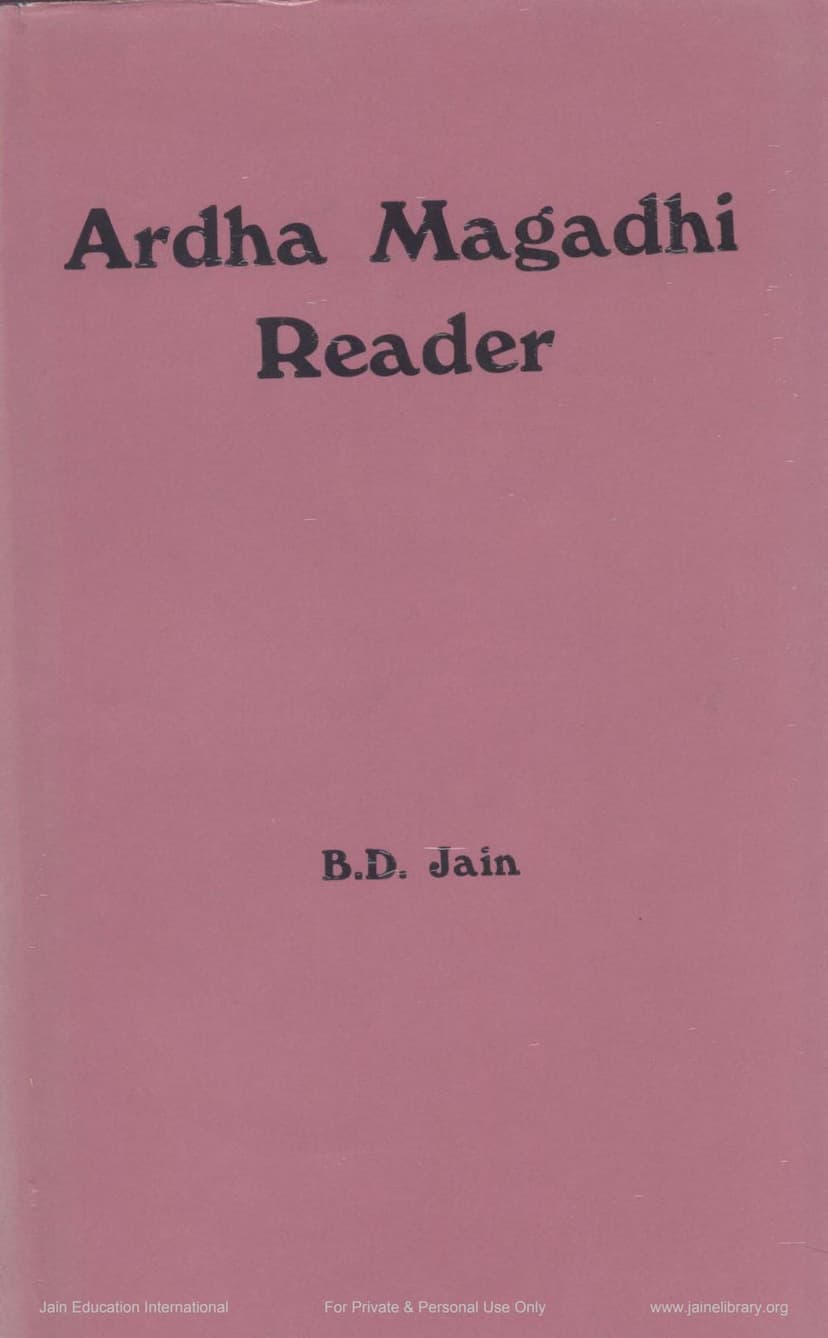Ardha Magadhi Reader
Added to library: September 1, 2025

Summary
The provided text is a comprehensive reader on Ardha-Magadhi, a Prakrit language used by Lord Mahavira for preaching. The book, titled "Ardha Magadhi Reader" by B.D. Jain, aims to provide beginners with an accessible way to study Jain Prakrit literature at its source.
Here's a summary of the key aspects covered in the text:
Introduction to Ardha-Magadhi:
- Nature of the Language: Ardha-Magadhi is described as a mixed dialect, incorporating elements from various other dialects to make Lord Mahavira's teachings understandable to people speaking diverse languages in Magadha. It's not purely Magadhi but contains a greater element of it.
- Jaina Prakrit: It is also referred to as Jaina Prakrit because many Jain scriptures are composed in this language.
- Purpose of the Book: The "Ardha Magadhi Reader" contains 13 extracts from authoritative Jain literature in both prose and verse, accompanied by English translations and footnotes, to facilitate learning for beginners.
Content of the Book:
- Grammar: A detailed section on Ardha-Magadhi grammar is provided, covering:
- Alphabet (vowels and consonants)
- Declension of nouns (masculine, feminine, neuter, irregular forms)
- Adjectives
- Numerals (cardinal, ordinal, multiplicatives)
- Pronouns (personal, demonstrative, interrogative, relative)
- Sandhi (vowel changes)
- Verbs (conjugations for present, past, future, imperative, potential, passive voice, participles)
- Compounds (noun, adjective, adverbial)
- Suffixes
- Syntax
- Language and Literature: An overview of Ardha-Magadhi language and literature, including the history of the canon, and an account of the Siddhanta.
- Bibliography: An extensive bibliography of texts, grammars, readers, dictionaries, histories of literature, and general works related to Jainism.
- Jain Scholars and Manuscripts: Information on prominent Jain scholars and an account of Jain manuscripts.
- Extracts: The core of the book includes 13 extracts from Jain scriptures, each with its original Ardha-Magadhi text and an English translation. These extracts cover various themes and teachings within Jainism.
Specific Themes in the Extracts: The extracts cover a range of didactic and narrative content from Jain scriptures, including:
- The story of a child named Miyáputta, who was born blind, deaf, and deformed, and the spiritual insights derived from his life and previous births.
- The tale of Prince Meha, his royal life, his desire for renunciation, and the influence of his previous births and the teachings of Mahavira on his path to salvation.
- Descriptions of various ascetics and hermits and their practices.
- Discussions on the consequences of sensual pleasures and the importance of renunciation.
- An explanation of "Ittara Death," a form of religious suicide through starvation.
- The Jain concept of injury to life and its repercussions.
- The path to liberation (Moksha) as taught by Mahavira.
- The distinction between foolish and wise deaths.
- The duties of a monk and the trials and persecutions they might face.
- The story of Citra and Sambhúta, illustrating the impact of karma and the importance of right conduct.
- The concept of Right Conduct (Áyár Appaṇihi) and its practical application.
Overall Significance: The "Ardha Magadhi Reader" is presented as a valuable resource for anyone interested in understanding the foundational texts of Jainism in their original linguistic context. It bridges the gap between the ancient scriptures and modern learners by providing grammatical explanations and clear translations. The book highlights the meticulous nature of Jain philosophy and ethics, emphasizing principles of non-violence, self-control, and the pursuit of liberation through spiritual discipline.